
Pulmonary embolism, illustration Stock Image F036/6480 Science Photo Library
A pulmonary embolism occurs when a clump of material, most often a blood clot, gets stuck in an artery in the lungs, blocking the flow of blood. Blood clots most commonly come from the deep veins of your legs, a condition known as deep vein thrombosis. In many cases, multiple clots are involved. The portions of lung served by each blocked.

CXR eponyms in pulmonary embolism • LITFL • Medical Eponym Library
The ECG changes associated with acute pulmonary embolism may be seen in any condition that causes acute pulmonary hypertension, including hypoxia causing pulmonary hypoxic vasoconstriction.. Editor-in-chief of the LITFL ECG Library. Twitter: @rob_buttner. 3 Comments . Erin . March 13, 2019 / 01:30 Reply. Hi Dr. Burns, can you list the.

Pulmonary Embolism • LITFL • CCC Respiratory
Reviewed and revised 7 January 2016. OVERVIEW. Thrombolysis is an established therapy for massive pulmonary embolism; The use of thrombolytics for the treatment of submassive PE is controversial — the limited documented benefit (e.g. improved hemodynamics, potential for less chronic pulmonary hypertension) must be weighed against the increased risk of life-threatening hemorrhage and the.
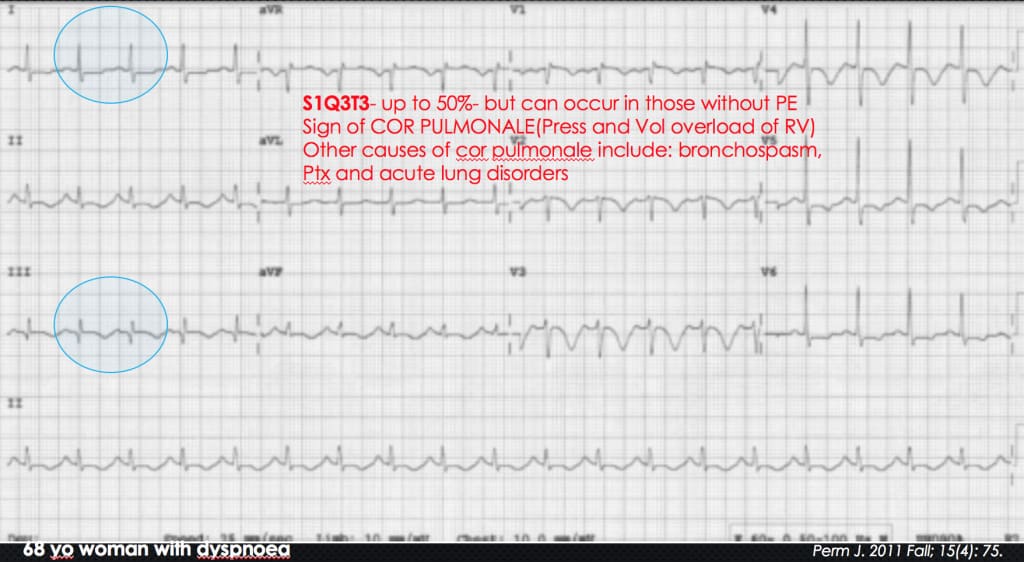
The ECG’s of Pulmonary Embolism Resus
S1Q3T3 pattern in ECG is seen in acute pulmonary embolism [1]. S1Q3T3 pattern means the presence of an S wave in lead I (indicating a rightward shift of QRS axis) with Q wave and T inversion in lead III. S1Q3T3 pattern is the classical ECG pattern of acute pulmonary embolism which is often taught in ECG classes, though it is not the commonest.
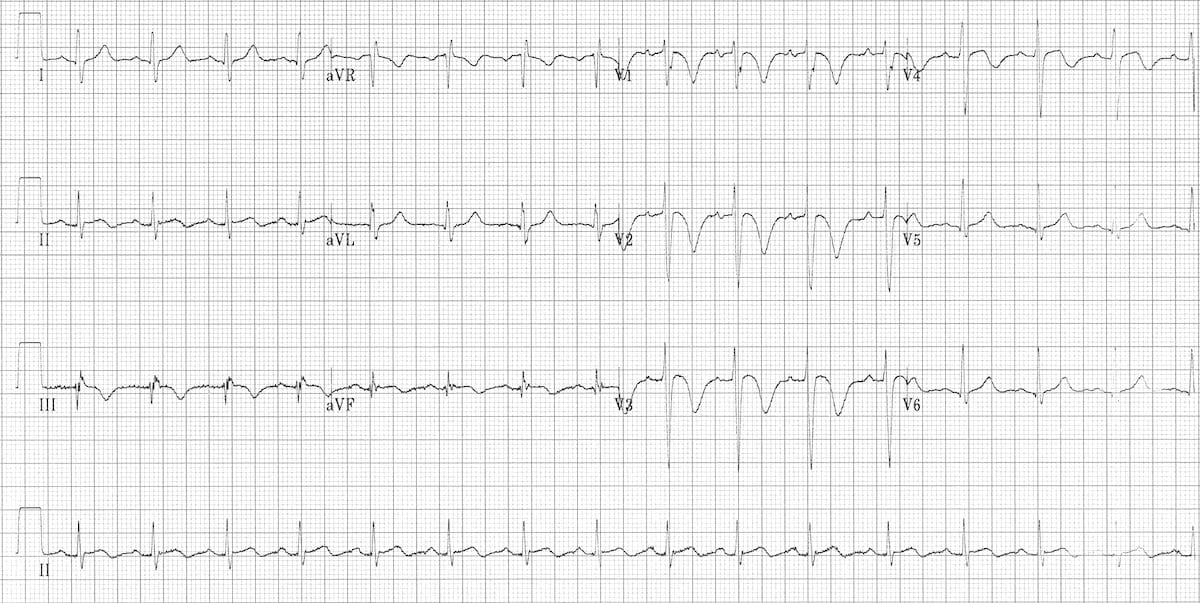
ECG changes in Pulmonary Embolism • LITFL • ECG Library
Pulmonary embolism occurs when embolic venous thrombi are caught within the branching lung vasculature. These thrombi often develop within the leg or pelvic veins, and approximately half of all.
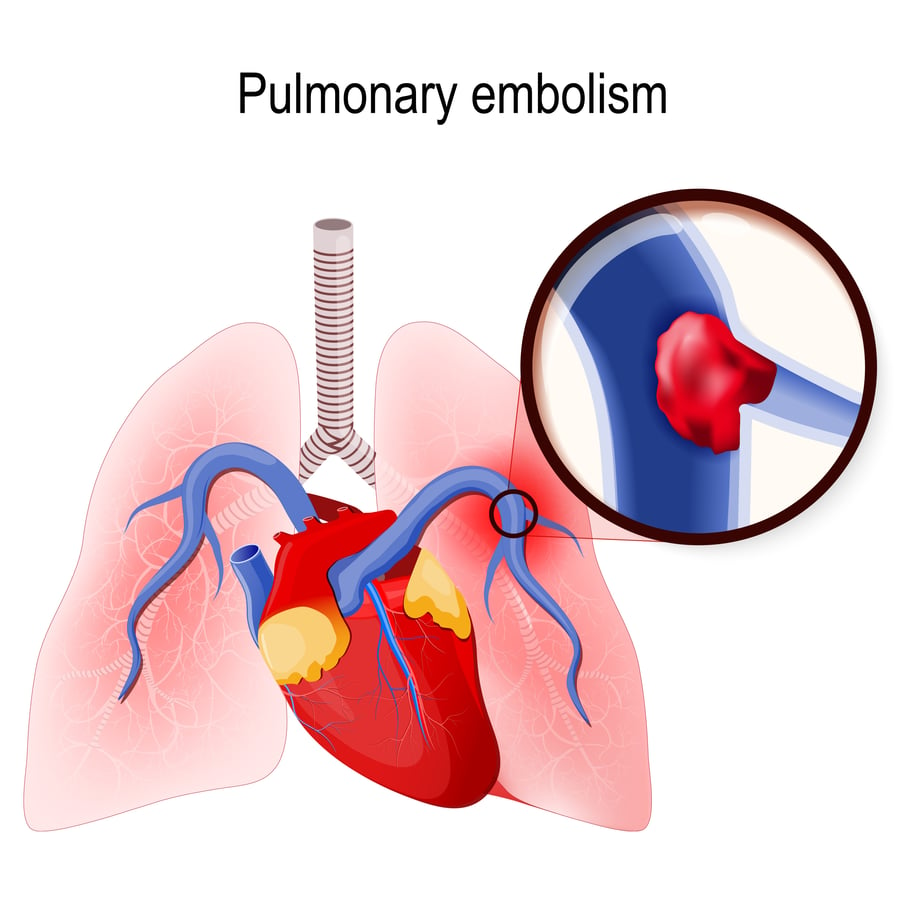
Pulmonary Embolism What You Need to Know
CT pulmonary angiography — also called a CT pulmonary embolism study — creates 3D images that can find changes such as a pulmonary embolism within the arteries in your lungs. In some cases, contrast material is given through a vein in the hand or arm during the CT scan to outline the pulmonary arteries. Ventilation-perfusion (V/Q) scan

Cardiopulmonary interaction and pathobiology of pulmonary hypertension... Download Scientific
The S 1 Q 3 T 3 sign (prominent S wave in lead I, Q wave and inverted T wave in lead III) is a sign of acute cor pulmonale (acute pressure and volume overload of the right ventricle because of pulmonary hypertension) and reflects right ventricular strain.1 This electrocardiogram (ECG) finding is present in 15% to 25% of patients ultimately diagnosed with pulmonary emboli (PE).2 Any cause of.

Pulmonary Embolus pondering • LITFL • Clinical Case discussion
Wells PS, Anderson DR, Rodger M, et al. Derivation of a simple clinical model to categorize patients probability of pulmonary embolism: increasing the models utility with the SimpliRED D-dimer. Thromb Haemost 2000;83:416-20. Le Gal G, Righini M, Roy PM, et al. Prediction of pulmonary embolism in the emergency department: the revised Geneva score.

Pulmonary Embolism What is it and Why Does it Occur? Video & Lesson Transcript
Acute pulmonary embolism occurs frequently and may cause death or serious disability. 1 Case fatality rates vary widely, 2,3 but approximately 10% of all patients with acute pulmonary embolism die.

Pulmonary Embolism Causes, Symptoms & Treatment
This document follows the previous ESC guidelines focusing on the clinical management of pulmonary embolism (PE) published in 2000, 2008, and 2014. Many recommendations have been retained or their validity has been reinforced; however, new data have extended or modified our knowledge in respect of the optimal diagnosis, assessment, and.

3 Symptoms of Pulmonary Embolism Elitecare Emergency Hospital
A pulmonary embolism (PE) is a blood clot that develops in a blood vessel elsewhere in the body (often the leg), travels to an artery in the lung, and suddenly forms a blockage of the artery. Abnormal blood clots can form due to problems such as "sluggish" blood flow through the veins, an abnormality in clot forming factors, and/or an injury to.
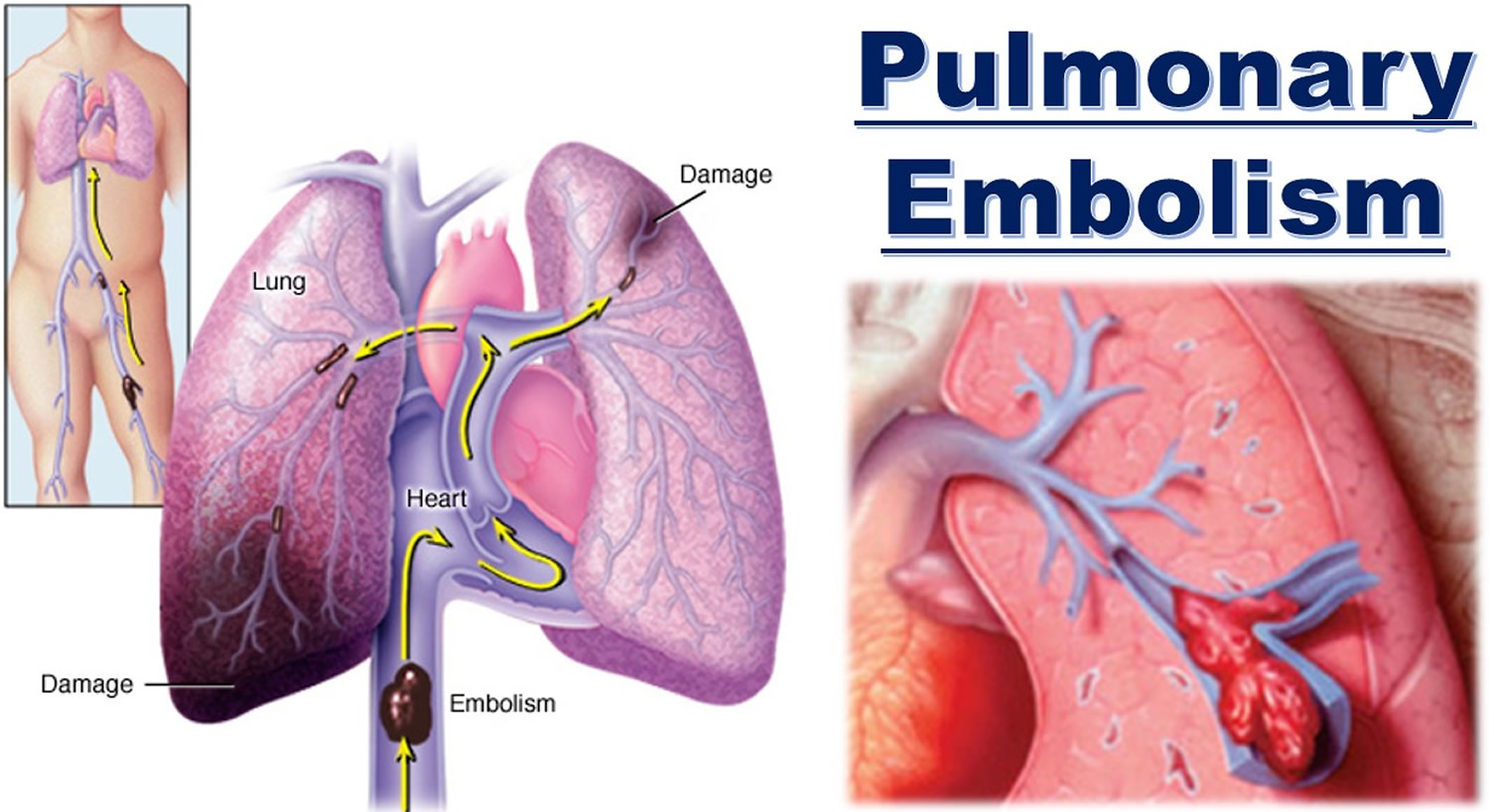
Pulmonary Embolism Causes, Signs & Symptoms, Diagnosis, Treatment
right ventricular dilation & strain general comments. RV dilation is a prerequisite for either submassive or massive PE.; Whenever possible, comparison should be made to prior echocardiography, CT scans, and/or EKGs.(Chronic right ventricular dysfunction suggests chronic pulmonary hypertension, rather than submassive PE).CT scan is usually immediately available.
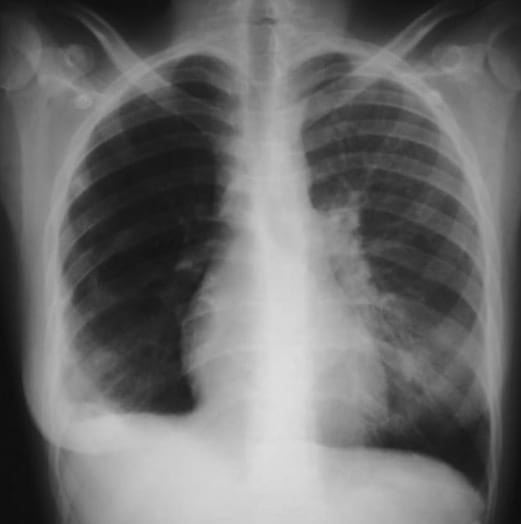
Westermark sign • LITFL • Medical Eponym Library
Acute pulmonary embolism (PE) is the third leading cause of death globally, yet the majority of patients have a low mortality rate and can be treated by anticoagulation alone.1 Reperfusion therapy (thrombolysis or embolectomy) is indicated for high-risk PE, defined as hemodynamic instability from PE, and for certain intermediate-risk patients, particularly those who deteriorate while receiving.
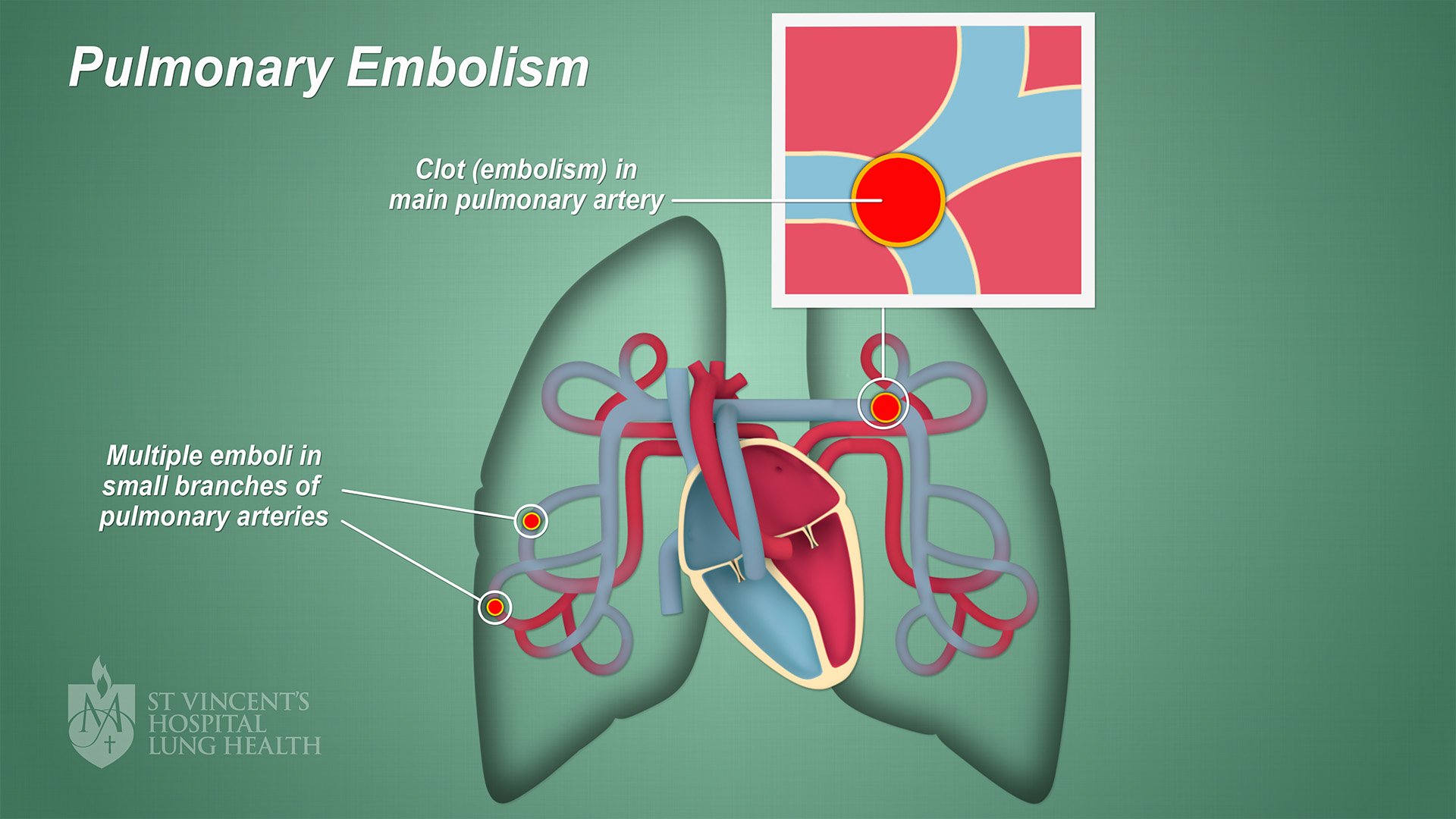
Pulmonary Embolism Pulmonary Embolism Aps Foundation Of America Inc / Unlike the wells score
Network Five: Episode 11 - Pulmonary embolism Participants: Dr Kevin Lai (senior emergency physician), Dr Arwen Morath (emergency physician), Dr Pramod Chandru, Naveendran Rajendran, Harry Hong, Samoda Wilegoda Mudalige, Kit Rowe and Caroline Tyers.. Part 1. This episode is all about pulmonary embolism (PE)! In this first segment, we explore the potential use of the age-adjusted d-dimer in.

Ecg Changes In Pulmonary Embolism Litfl Ecg Library Images
The value of the ECG for the diagnosis of pulmonary embolism (PE) is debatable. Once the diagnosis of PE has been established, however, the ECG could allow the massive forms to be distinguished. The purpose of our study was to analyze the ECG signs in patients hospitalized for PE in a cardiology unit.

Pulmonary Embolism (PE) Causes, symptoms, diagnosis, treatment
Pulmonary embolism (PTE, PE) ranges from asymptomatic to a life threatening catastrophe. PE occurs when a deep vein thrombosis migrates to the pulmonary arterial tree.. Cadogan M. CXR eponyms in pulmonary embolism. LITFL; Journal articles. Agnelli G, Becattini C. Acute pulmonary embolism. N Engl J Med. 2010 Jul 15;363(3):266-74.